Chengdu’s Dujiangyan stands out as a remarkable testament to ancient engineering, having transformed the landscape over 2,000 years ago. This innovative water management system, crafted by Li Bing and his son, not only fostered agriculture but also established a harmonious relationship with the environment. As a UNESCO World Heritage site, the project symbolizes sustainable practices that resonate today. What makes Dujiangyan even more captivating are the attractions within its scenic area, inviting visitors to explore its legacy further.
Key Points
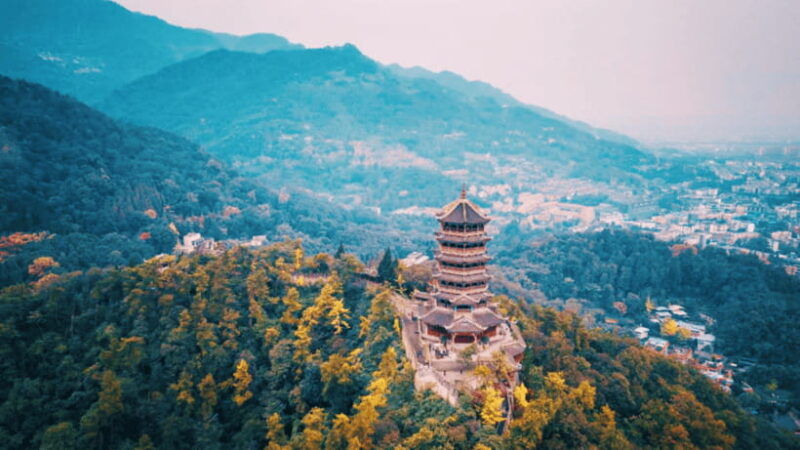
- Dujiangyan, built over 2,000 years ago during the Qin Dynasty, is the world’s oldest water conservancy project.
- Engineered by Li Bing, it transformed Chengdu into a fertile agricultural region, earning the title "Land of Abundance."
- The project showcases ancient Chinese engineering and sustainable water management practices, influencing future developments.
- Designated a UNESCO World Heritage Site in 2010, it highlights the cultural and environmental harmony of the region.
- Visitors can explore attractions like Fulong Temple and Anlan Suspension Bridge while learning about the site’s historical significance.
Historical Significance of Dujiangyan
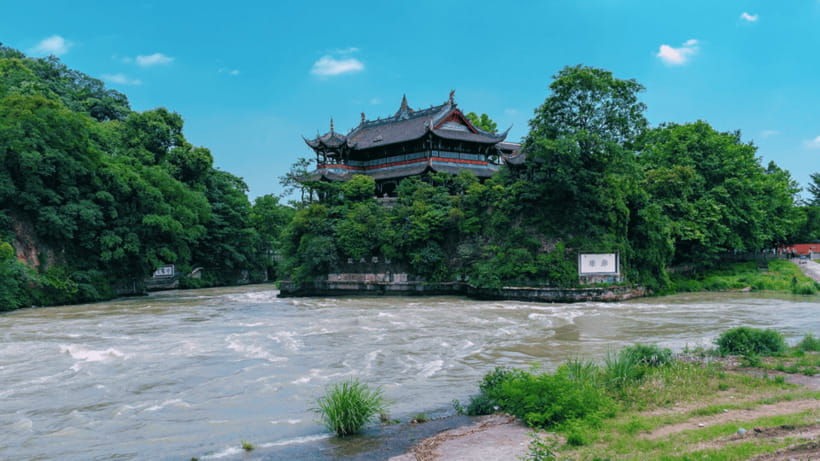
Although many water management systems have emerged throughout history, none hold as much significance as the Dujiangyan Water Conservancy Project, which dates back over 2,000 years to the Qin Dynasty.
This remarkable feat of engineering, crafted by Li Bing and his son, transformed the Chengdu plains into fertile agricultural land, earning it the title "Land of Abundance."
The project not only highlights ancient Chinese ingenuity but also showcases sustainable water management practices that remain relevant today.
Recognized as a UNESCO World Heritage site, Dujiangyan stands as a testament to the enduring legacy of cultural and environmental harmony through innovative engineering.
Looking for more options in Chengdu? We've reviewed plenty of other experiences.
The Engineering Marvel: Li Bing and His Legacy
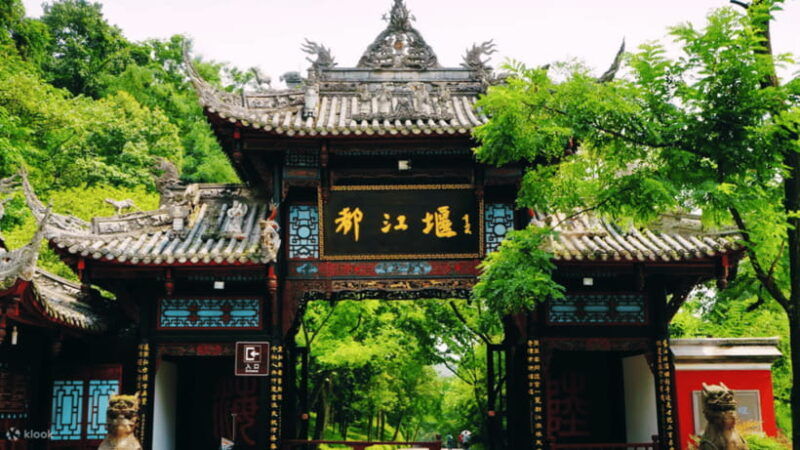
As the mastermind behind the Dujiangyan Water Conservancy Project, Li Bing’s innovative approach to water management not only addressed the pressing irrigation needs of his time but also laid the foundation for sustainable agricultural practices that thrived for centuries.
His ingenious designs utilized natural landscapes, allowing rivers to be effectively diverted while preventing flooding. Li Bing’s methods demonstrated a deep understanding of hydrology, which influenced subsequent generations of engineers.
His legacy continues to inspire modern water conservation efforts, showcasing that ancient wisdom can still inform contemporary practices. Dujiangyan remains a testament to Li Bing’s brilliance and commitment to enhancing agricultural prosperity.
UNESCO World Heritage Site Status
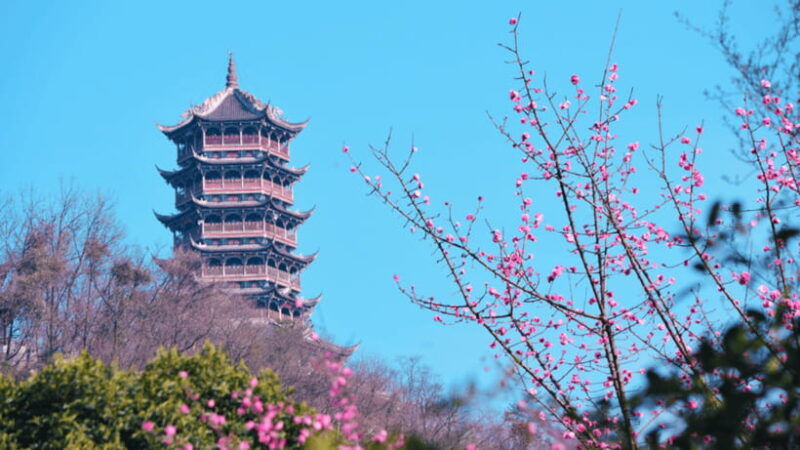
Recognized for its exceptional historical and engineering significance, the Dujiangyan Water Conservancy Project was designated a UNESCO World Heritage Site in 2010. This designation highlights the importance of ancient Chinese ingenuity in water management and agricultural development. Visitors can appreciate the project’s enduring legacy while exploring its rich cultural context.
| Feature | Description |
|————————–|—————————————–|
| Historical Importance | Over 2,000 years of engineering history |
| Engineering Innovation | Ancient solutions for irrigation |
| Cultural Impact | Transformed Chengdu into fertile land |
| Global Recognition | UNESCO recognition since 2010 |
Attractions Within the Scenic Area
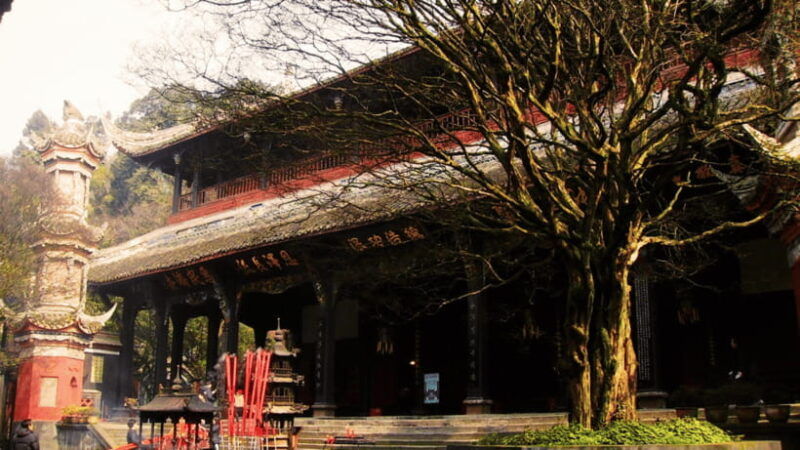
Visitors to the Dujiangyan Water Conservancy Project will find a wealth of attractions that beautifully blend natural beauty with historical significance.
They can explore Fulong Temple, where intricate architecture meets serene surroundings, and the Two Kings Temple, dedicated to the legendary figures of Chinese history.
The Anlan Suspension Bridge offers breathtaking views, perfect for a memorable photo opportunity.
Cultural exhibits throughout the scenic area provide fascinating insights into the project’s importance and engineering marvels.
Nature enthusiasts will appreciate the lush landscapes, making it an ideal spot for leisurely walks and exploration while soaking in the rich heritage of this UNESCO site.
More Great Tours NearbyBooking and Payment Information
Exploring the captivating attractions of the Dujiangyan Water Conservancy Project is just the beginning; planning a visit requires some key booking and payment details.
Tickets start at £18.05 per person, and visitors can enjoy flexible booking options, reserving now and paying later, with free cancellation up to 24 hours in advance.
To ensure guaranteed entry, it’s advisable to make reservations 1–2 days prior to the visit. Providing full name and passport number during booking is essential to avoid potential cancellations.
With these details in hand, visitors can look forward to an enriching experience at this UNESCO World Heritage site.
Visitor Guidelines and Requirements
To fully enjoy the Dujiangyan Water Conservancy Project, it’s essential for guests to adhere to specific visitor guidelines and requirements. Following these will enhance the experience:
-
Bring necessary items: a valid passport, comfortable shoes, and a camera for capturing the stunning scenery.
-
Respect the site’s heritage by following all guidelines and avoiding restricted areas.
-
Plan for walking, as the site covers extensive grounds, making sturdy footwear a must.
Operating Hours and Seasonal Considerations
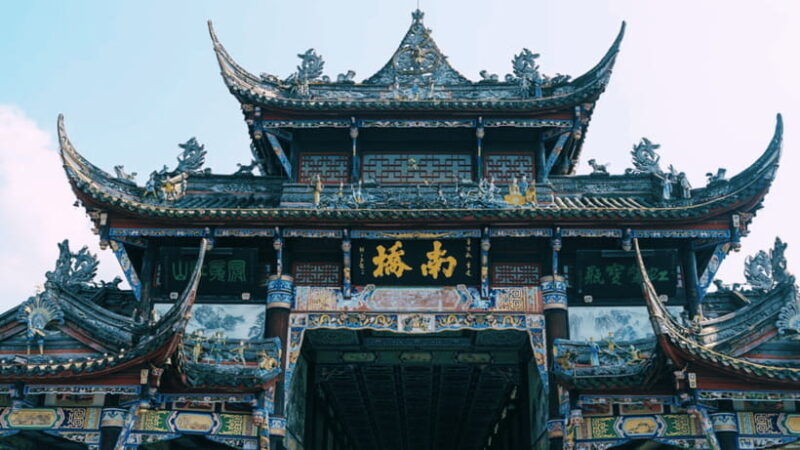
Understanding the operating hours and seasonal considerations is vital for planning a visit to the Dujiangyan Water Conservancy Project.
During the summer months, the site operates from 08:00 to 18:00, with the last admission at 17:30. In winter, hours shift to 08:00 to 17:30, closing at 17:00.
Visitors should be mindful of weather conditions, as seasonal variations can impact their experience. Ensuring ample time for exploration is essential, especially given the extensive walking paths and historical sites.
Adhering to site guidelines helps preserve this UNESCO World Heritage site while enhancing the overall visit.
Tips for Exploring Dujiangyan
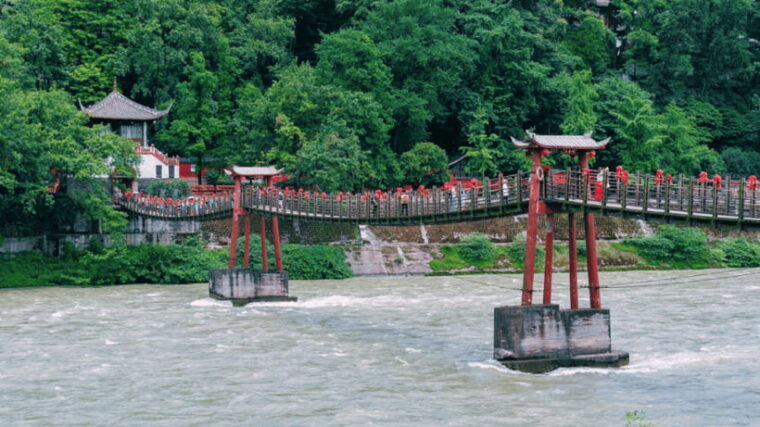
While visiting the Dujiangyan Water Conservancy Project, it’s essential to plan ahead to make the most of the experience.
Planning ahead is crucial for an enriching experience at the Dujiangyan Water Conservancy Project.
Here are three tips to enhance the visit:
-
Wear Comfortable Shoes: Expect extensive walking on uneven terrain; sturdy footwear is a must.
-
Bring Essential Items: Don’t forget your passport, camera, and water to stay hydrated throughout the day.
-
Visit Early: Arriving early allows for a quieter experience and better photo opportunities, especially at popular sites like Anlan Suspension Bridge.
Frequently Asked Questions
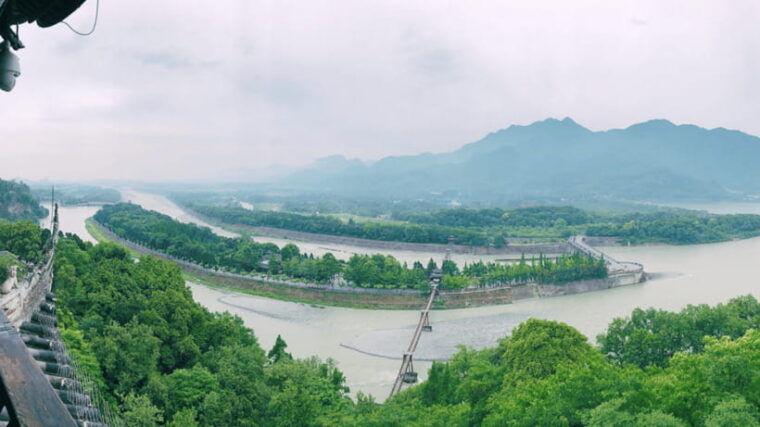
How Long Does It Take to Explore the Entire Site?
Visitors typically need around two to three hours to explore the entire site, allowing ample time to appreciate its historical significance, enjoy scenic views, and visit key attractions without feeling rushed or overwhelmed.
Are There Food Options Available Within the Scenic Area?
Visitors will find various food options within the scenic area, offering local delicacies and refreshments. They can enjoy a meal while appreciating the beautiful surroundings, ensuring a delightful experience during their exploration of the site.
Is There a Best Time of Year to Visit Dujiangyan?
The best time to visit Dujiangyan is during spring and autumn. These seasons offer mild weather and vibrant scenery, making it perfect for exploring the historical sites and enjoying the surrounding natural beauty.
Can I Bring a Stroller or Wheelchair for Accessibility?
Visitors can bring strollers and wheelchairs for accessibility. The site’s paths accommodate both, ensuring everyone can explore the historical attractions comfortably. It’s advisable to check specific routes for any potential limitations before visiting.
Are There Guided Tours Available in Different Languages?
Yes, visitors can find guided tours in various languages. The tours cater to different preferences, ensuring everyone enjoys the rich history and stunning sights, making the experience informative and engaging for all attendees.
The Sum Up
Dujiangyan stands as a testament to ancient ingenuity and sustainable engineering, captivating visitors with its rich history and stunning landscapes. As the world’s oldest water conservancy project, it not only showcases the brilliance of Li Bing but also highlights the importance of water management in agriculture. Whether exploring its scenic trails or learning about its cultural significance, visitors leave with a deeper appreciation for this UNESCO World Heritage site and its enduring legacy in modern practices.
You can check availability for your dates here:More Private Tours in Chengdu
- Private Half-Day Chengdu Panda Breeding Center Tour with Optional Volunteer
- Private Arrival Transfer: Chengdu Airport (CTU or TFU) to Hotel
- Private Dujiangyan Panda Base Panda Rescue Center Volunteer for a Day
- 2-Day Private Chengdu Panda Tour
- Private Tour of Chengdu Panda Center and Leshan Giant Buddha
- Private Full-Day Tour: Chengdu City Highlights
More Tours in Chengdu
- One Day Trip to Chengdu Panda Base and Leshan Buddha Tour
- Tea Village in lost Town and Buddha 1 day tour
- One Day Trip to Dujiangyan Irrigation System & Mount QingCheng Tour
- Private Half-Day Chengdu Panda Breeding Center Tour with Optional Volunteer
- Dujingyan Panda Sanctuary Half day tour option panda volunteer
- Dujiangyan/Wolong Panda Sanctuary day tour option panda keeper
More Tour Reviews in Chengdu
- Evening Foodie Adventure in Chengdu the Land of Plenty
- Half day Chengdu Dumpling making Cooking Class: Make from Scratch
- One Day Trip to Chengdu Panda Base and Leshan Buddha Tour
- Chengdu Research Base of Giant Panda Breeding Ticket pre-booking
- Tea Village in lost Town and Buddha 1 day tour
- One Day Trip to Dujiangyan Irrigation System & Mount QingCheng Tour
Still browsing? Here are more Chengdu experiences we've covered recently
- Evening Foodie Adventure in Chengdu the Land of Plenty
- Half day Chengdu Dumpling making Cooking Class: Make from Scratch
- One Day Trip to Chengdu Panda Base and Leshan Buddha Tour
- Chengdu Research Base of Giant Panda Breeding Ticket pre-booking
- Tea Village in lost Town and Buddha 1 day tour
- One Day Trip to Dujiangyan Irrigation System & Mount QingCheng Tour
- Private Half-Day Chengdu Panda Breeding Center Tour with Optional Volunteer
- Cultural Chengdu In Depth
- Dujingyan Panda Sanctuary Half day tour option panda volunteer
- Dujiangyan/Wolong Panda Sanctuary day tour option panda keeper
- Private Arrival Transfer: Chengdu Airport (CTU or TFU) to Hotel
- Private Dujiangyan Panda Base Panda Rescue Center Volunteer for a Day
